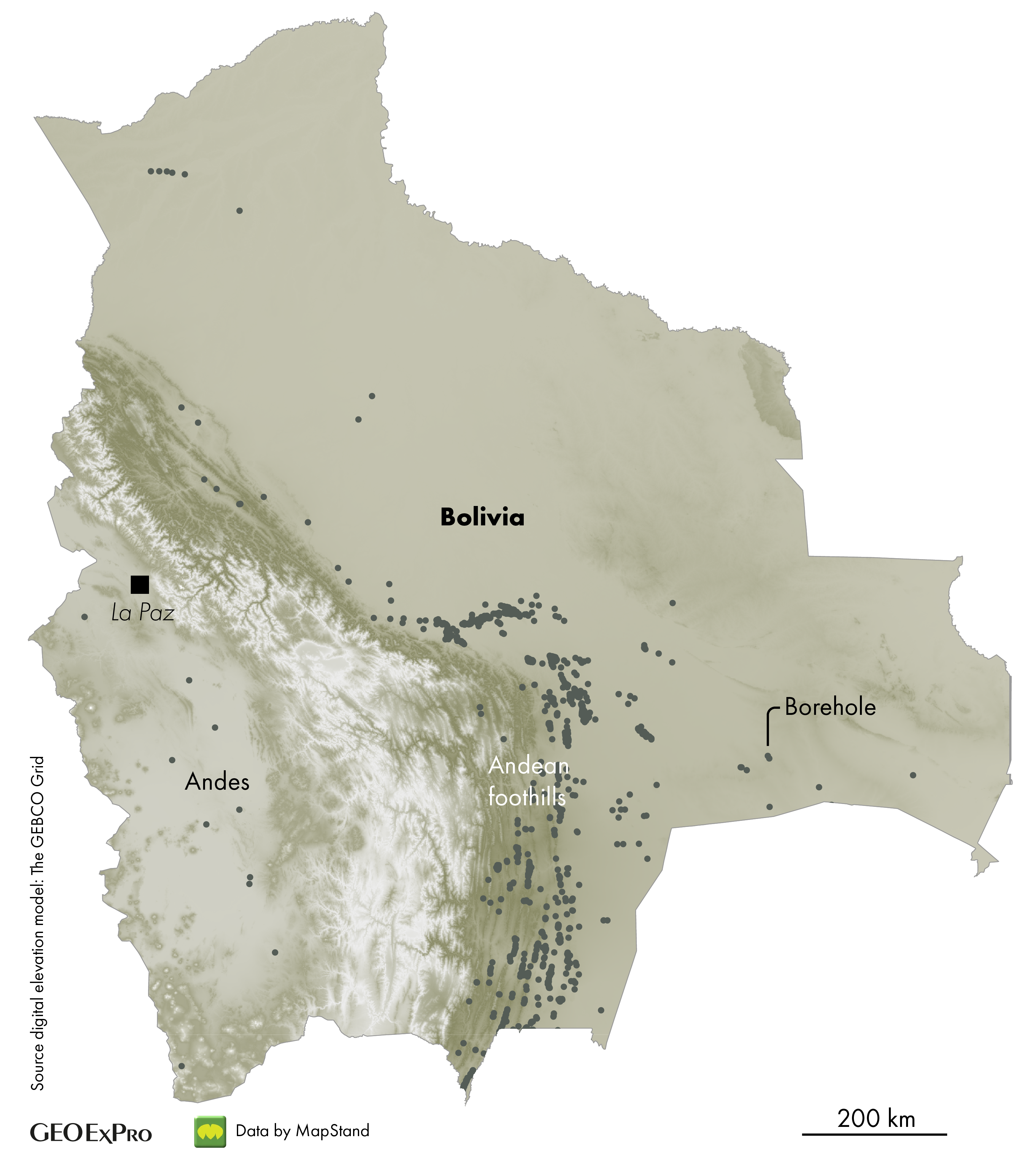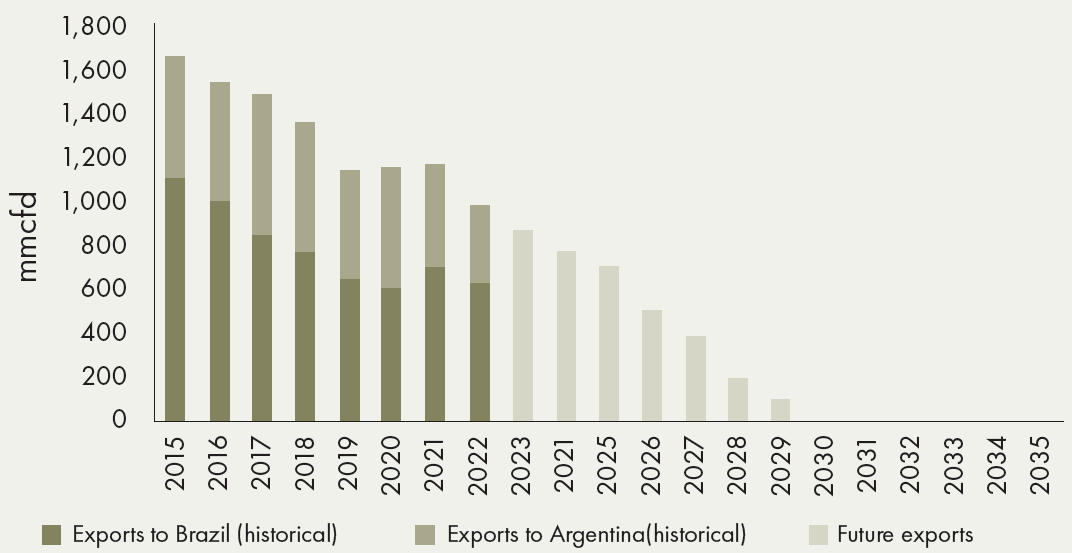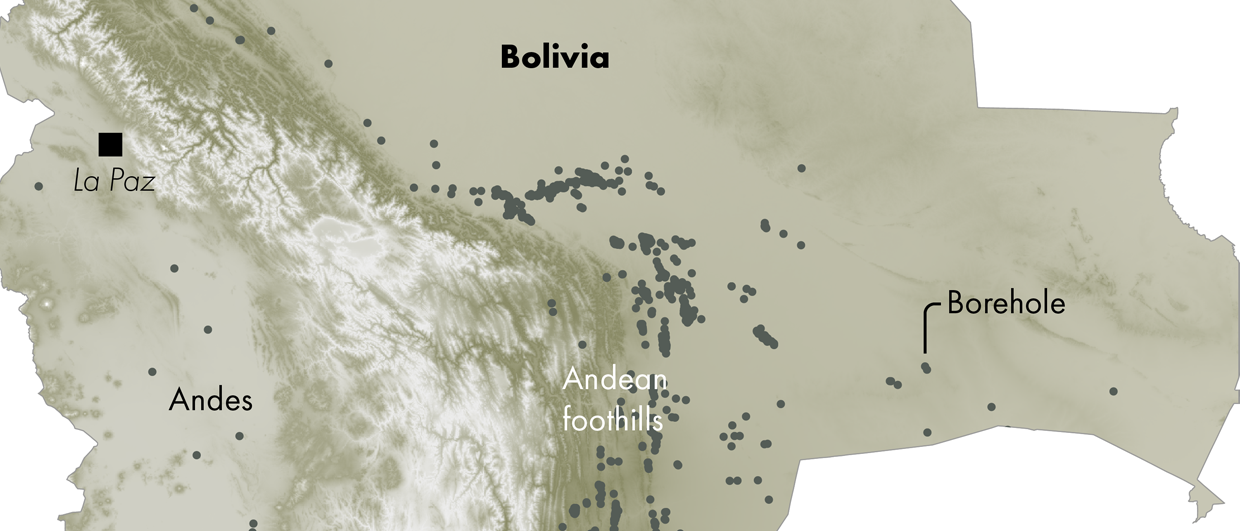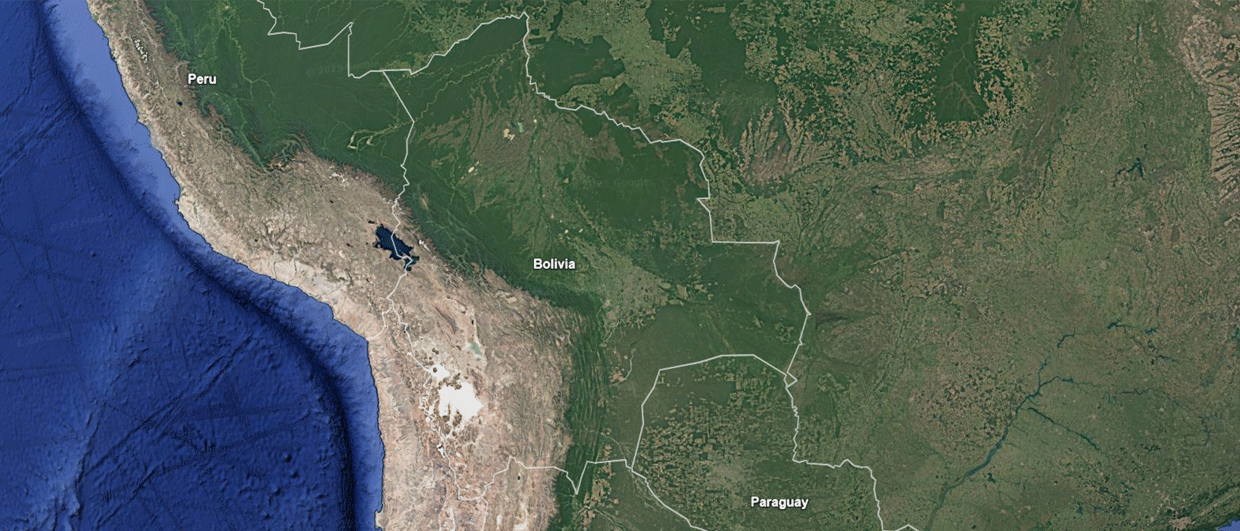Bolivia is still a gas-exporting country, with Brazil and Argentina being the two customers. But, with production on a long-term decline, and with Argentina now developing its own resource in the Vaca Muerta, the flow of gas will soon stop towards the Argentinian market. However, in order to continue meeting its domestic and the Brazilian demand, Bolivia realises that something needed to be done.
In that light, the so-called Upstream Reactivation Plan was launched a few years ago, with the ambition to ramp up both oil and gas production in the Subandean fold and thrust belt, Bolivia’s most important petroleum play, and the further development of more mature assets. However, given the geological setting of the main petroleum system in Bolivia, it is not that easy to just start drilling many wells at the same time.

Fractured sandstones
“Our main reservoirs are naturally fractured sandstones of Devonian age”, says Fernando Alegria, exploration manager at state-owned company YPFB Chaco, part of Yacimientos Petrolíferos Fiscales Bolivianos (YPFB). “These reservoirs are often buried very deeply, with 4000 to 5,000 m being a fairly common target depth. Together with the very consolidated nature of the overburden, its complicated structural history with many thrust faults and the associated low ROP’s, it is not a trivial exercise to drill to these depths.”
The company is currently drilling an exploration well in the south of the country close to the Argentinian border. “We expect to hit our target at some point this year”, Fernando adds, pointing out that these wells easily cost between 50 and 150 million USD and take more than a year to complete. It is the depth of these targets that makes exploration a costly exercise in Bolivia.

Using your imagination
One of the other reasons why exploration is sometimes challenging is the fact that especially in the Andes fold and thrust belt, the acquisition of seismic is very costly and the quality is not as good as marine seismic to put it that way. “Geologists have to use their imagination to a large extent to come up with the definition of a prospect in these areas”, laughs Fernando. In contrast, in the foothills to the east, it is easier to acquire 2D and even 3D, but yet so far the fields discovered in that area tend to be smaller than the ones found in the fold and thrust belt.
Two remarkable exploration attempts
A spectacular example of recent exploration in Bolivia is the drilling of the deepest well in South America by a consortium of, Repsol, Shell and Panamerican to almost 8,000 m depth, again targeting a Devonian reservoir. Whilst the well was drilled successfully, no commercial gas was found, unfortunately.
Another not-so-successful well was drilled by Shell in 2020, but it was unsuccessful for another reason. Whilst the bit had already exceeded the 5,000 m mark, the Anglo-Dutch company decided to leave the country and quit well operations. “It was a shame to see this happening whilst we were getting so close to our target”, says Fernando.
The main focus of activity at the moment is the south of the country, where traditionally most oil and gas drilling has taken place and where most of the infrastructure resides as a result. “A few wells were drilled in the northern part of the Subandean fold and thrust belt, but all of these were unfortunately dry. We have also looked at the potential of shale oil and gas, also in the north of the country close to the border with Peru, but this is mainly in an area that has a protected environmental status, complicating or even prohibiting access to the area.”
The operator landscape
Apart from YPFB Andina and YPFB Chaco, the two companies that fall under the YPFB umbrella, the main international oil companies with a presence in Bolivia are Repsol, Petrobras and Total E&P. Repsol has focused on the production of its assets and does not have exploration licences at the moment.
Petrobras operates a two big gas fields in the south of the country, but since production is also declining from these assets, the company is weighing up the question whether to stay or to sell their assets, even though they have got a number of drillable prospects in their portfolio.
Vintage (Oxy) is active in Bolivia too. More recently, Canacol – Canadian and Colombian oil company – has also made its entry in Bolivia and are going through the paperwork to gain the rights to operate in some areas.



